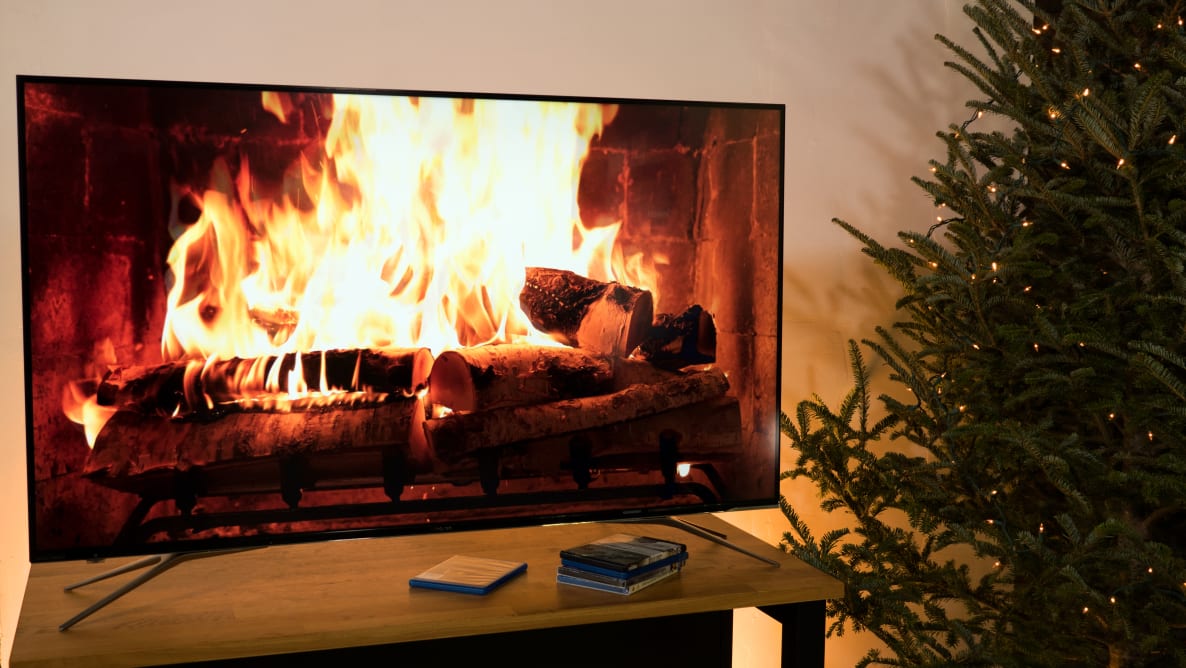Pros
Cons
You see, the H9E Plus delivers excellent contrast in standard viewing conditions, but in HDR, it doesn’t get bright enough to make the format sing. On the other hand, this affordable TV boasts a native refresh rate of 120Hz—nearly unheard of for a TV in its price range. This makes the H9E Plus a compelling option for gamers and sports fans (but more so for the former, I’d imagine).
But there’s a lot to like about the H9E Plus even if you’re not a regular gamer. After all, its contrast and motion performance will still treat you well across the board, regardless of content. The only people I’d encourage to tread lightly are those expecting their next TV to offer decent-to-great HDR performance. The H9E Plus gets the job done in HDR, but not as well as some of its competitors.
About the Hisense H9E Plus
The H9E Plus is available in just two sizes, and our loan unit is the 55-inch model. Here’s the lineup at a glance:
• 55-inch (55H9E Plus, 55H9080E Plus), MSRP $699.99 • 65-inch (65H9E Plus, 65H9080E Plus), MSRP $999.99
Both panels are of the edge-lit VA variety, and both TVs feature local dimming software.
In two rectangular cutouts on the back of the panel you’ll find 4 HDMI ports, 2 USB ports (one of which is USB 3.0), component inputs, an RF jack, an ethernet port, and both analog and optical audio outputs.
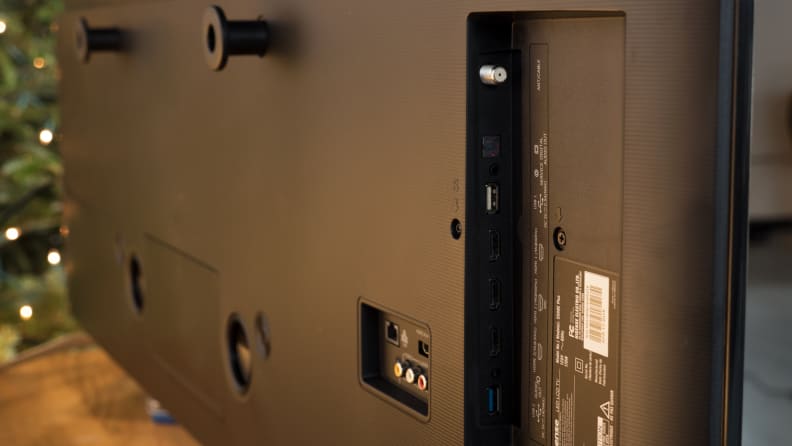
When it comes to connectivity options, the H9E Plus offers the usual suspects.
• 4K resolution (3,840 x 2,160) • High Dynamic Range compatibility (HDR10 and Dolby Vision) • Built-in smart platform (Google Android TV) • Native 120 Hz refresh rate
As is customary for our TV reviews, I let the H9E Plus warm up over the course of several days before conducting any tests. While gathering contrast data, I used the standard ANSI checkerboard pattern for official measurements and also took incidental readings during the playback of HDR-supported Blu-rays.
Performance Data (Calibrated mode)
• HDR white fall-off (peak brightness/black level): • 2% white: 147.2 • 10% white: 273.3 nits • 20% white: 286.1 nits • 50% white: 290.1 nits • 100% white: 289.2 nits
• HDR contrast (peak brightness/black level): 284 nits / 0.28 nits • SDR contrast (peak brightness/black level): 280.7 nits / 0.043 nits
• HDR color gamut coverage: 99% • SDR color gamut coverage: 99%
• Viewing angle: ±15.5°
The H9E Plus features a relatively slim panel wrapped in a dark gray plastic shell. The TV’s claw-like metallic stands certainly stand out, but whether they do so in a good way or a bad way is up to you.
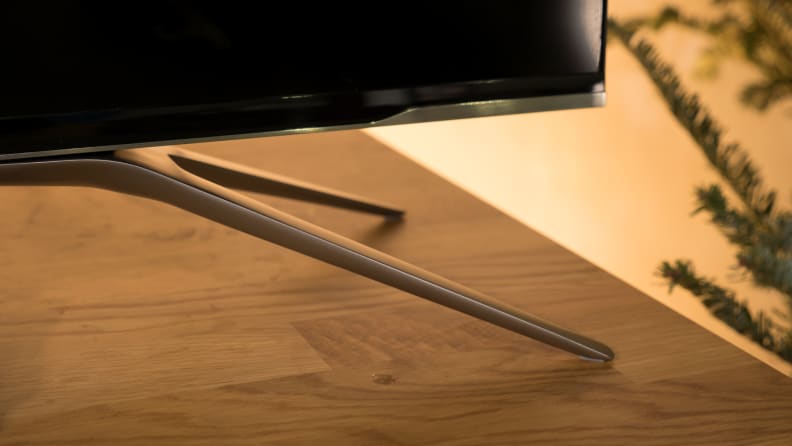
The TV stands atop two wide-set feet that look a little bit like metallic talons.
I’m not crazy about the look, personally—the curved, pointy feet would probably stick out in my living room given the rest of my home’s aesthetic. Your mileage, of course, may vary.
I can’t say the same for the TV’s remote, though, which is almost guaranteed to get on the nerves of just about everyone. The directional buttons in the center of the remote are stiff, chunky, and too similar in shape and feel.
There are six app-specific buttons on the top of the remote, but in all likelihood you’ll only find yourself using 2-3 of them with any regularity.
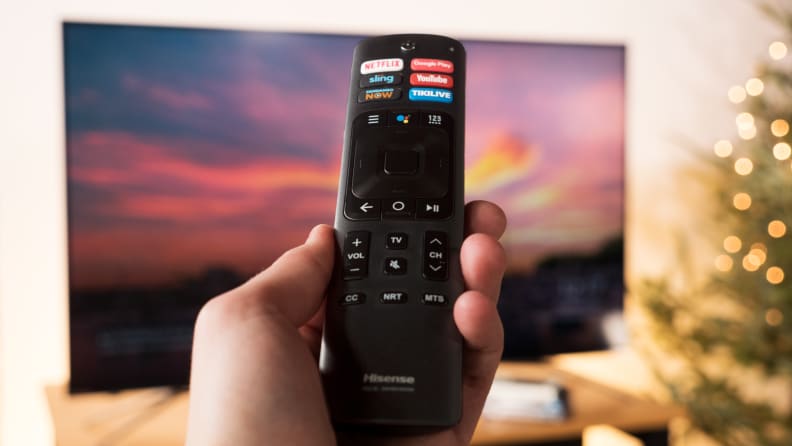
The TV's remote control isn't anything to write home about.
Before detailing what I understand to be the H9E Plus’s shortcomings, it’s worth reiterating that the vast majority of content looks very good on this TV, and I think that’ll hold true even for those with a keen eye for TV performance. The H9E Plus’s strengths basically come down to three elements: contrast, color, and motion.
The H9E Plus is capable of some impressively dark black levels, so even though it struggles to climb above the 300-nit benchmark, the picture nevertheless pops enough to please the eye.
In addition to its respectable contrast, the H9E Plus’s color gamut is capable of covering 99% of both the SDR standard (Rec.709) and the wider HDR standard (P3). If you set aside the TV’s unfortunate habit of under-illuminating blue hues, the H9E Plus produces vibrant, accurate color with not much error to speak of.

Because the H9E Plus under-illuminates its blues, Paul Hollywood's steely, blue-eyed glare will appear far less striking when he tells someone that the rosewater in their cake is too strong.
Finally, let’s talk about motion. The H9E Plus is one of the few TVs in this price bracket whose panel is equipped with a native refresh rate of 120Hz. In non-mumbo-jumbo terms, this essentially means that the H9E Plus produces twice as many images per second than most of its competitors, since the vast majority of mid-range TVs top out with a native refresh rate of 60Hz.
In practice, this means that fast-paced content like sports or video games tend to look smooth and judder-free without the aid of wonky, artificial-looking motion smoothing software. TV shows and movies shot in 24FPS tend to look better with a 120Hz refresh rate, too.
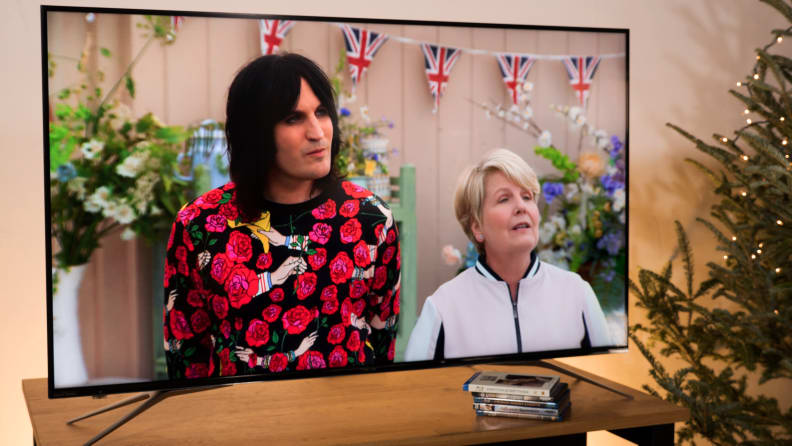
SDR content looks wonderful on the H9E Plus due to the TV's rich contrast and accurate color.
The H9E Plus’s biggest strengths—its contrast, color, and motion performance—are arguably the three most important elements of a well-performing display. Even though the TV stumbles in HDR (an assertion I’ll break open shortly), the Hisense H9E Plus never looks outright bad, even if you’re dealing with native HDR content. And in fact, most of the stuff I watched throughout the course of testing looked downright great!
With all that said, it’s also essential to understand the H9E’s shortcomings before forking over several hundred dollars for it. While its HDR performance doesn’t outright disappoint, it may not be reflective of the dazzling HDR experience you’ve seen in Best Buy TV aisles.

HDR or Dolby Vision content won't as impressive as it does on higher-end, HDR-capable TVs with brighter highlights.
The culprit is the H9E Plus’s struggles with deploying bright highlights to contrast the TV’s rich black levels. To be fair, this is more or less the case with most TVs in this price bracket. When we tested the 2018 Vizio D Series, for example, we found that its ceiling was limited to around 240 nits.
At the end of the day, the H9E Plus looks as good—and in some cases better—than some of its closest competitors, even when its so-so HDR measurements are factored into the equation.
If you’re searching for another factor to separate the H9E Plus from similarly priced TVs, you might want to consider the H9E Plus’s software. Hisense built the TV’s user experience around Google’s Android TV, and for the most part, the results are fine.
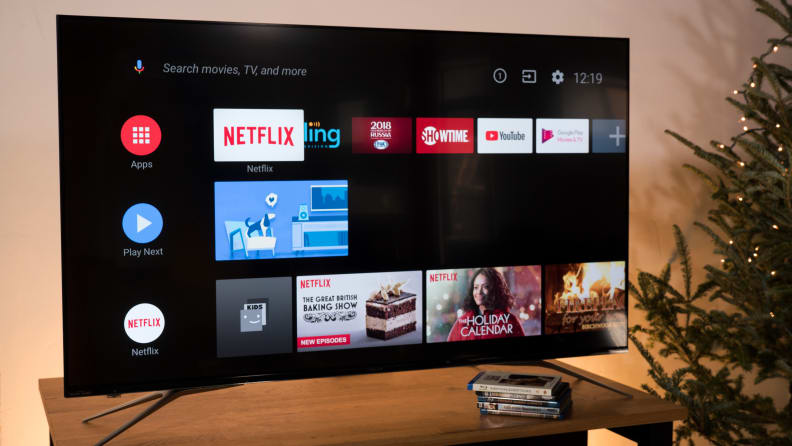
The H9E Plus's menu software and smart platform are built around Android TV, and if you're a frequent user of Google Assistant, you're likely to enjoy some of those benefits while using the H9E Plus.
I’m not crazy about the design language of certain settings menus and submenus (particularly when coupled with a clumsy remote and somewhat sluggish software speeds), but as far as smart platforms go, most of the usual apps and features are accounted for.
If you regularly rely on Google Assistant, Google Home, or Google Play for daily tasks, you're likely to get more mileage out of the H9E Plus's smart features due to the synergy of Android TV and Google's myriad services.
Should you buy it?
Yes, but be sure to calibrate your HDR performance expectations
It's 2018, my friends, and 4K HDR TVs have never been more affordable. That's great news! It does, however, make your job as a shopper a little more complicated than it might've been a couple years ago.
When I look at the Hisense H9E Plus, I see a great TV with a ton of upside, particularly for folks who don't mind less-than-stellar HDR performance. It's certainly not going to blow your hair back like a top-shelf TV capable of cracking 800 nits, but its price is reasonable and the picture holds up in most situations.
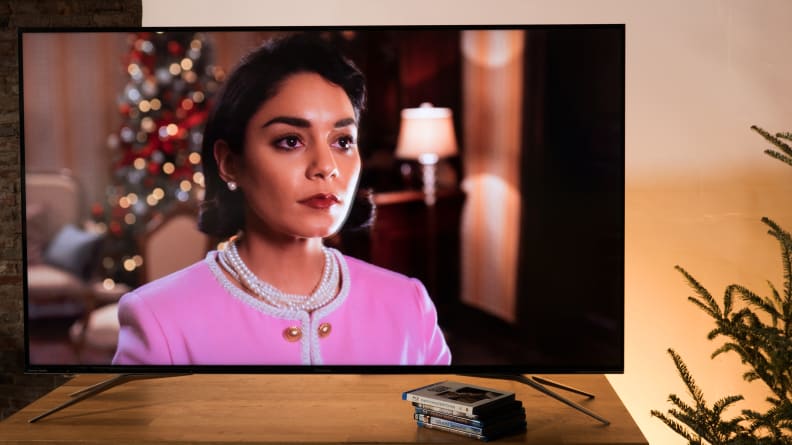
The Hisense H9E Plus is a respectable TV with a very reasonable price tag—just don't expect to be blown away.
If the TV's integration of Google Assistant excites you, there's even less of a reason to shop around for a different option—though I suspect most people shopping in this price range will want to maximize their dollar on performance.
The bottom line? The Hisense H9E Plus is yet another affordable 4K TV that cuts its corners sensibly, and for most people, it'll be a great addition to the living room.
Related Video: The 5 Best Gifts of 2018
Meet the tester
Michael Desjardin graduated from Emerson College after having studied media production and screenwriting. He specializes in tech for Reviewed, but also loves film criticism, weird ambient music, cooking, and food in general.
Checking our work.
Our team is here to help you buy the best stuff and love what you own. Our writers, editors, and experts obsess over the products we cover to make sure you're confident and satisfied. Have a different opinion about something we recommend? Email us and we'll compare notes.
Shoot us an email